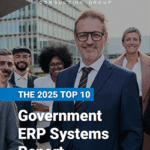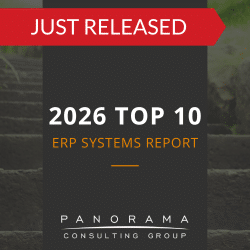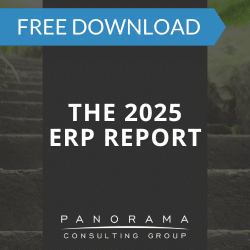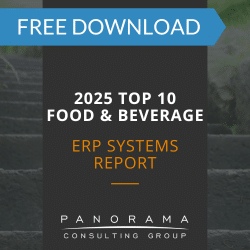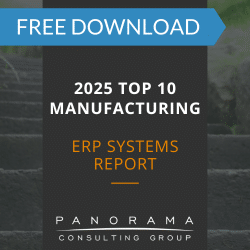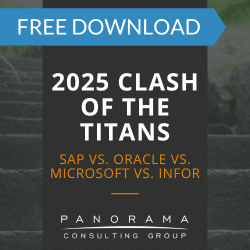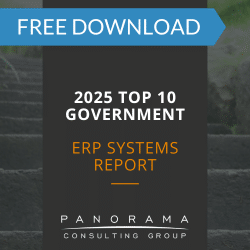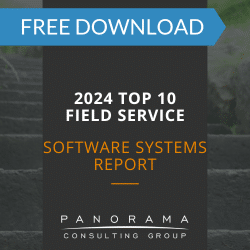- ERP challenges with nonlinear business models often stem from rigid workflows and assumptions rooted in traditional supply chains.
- The limitations of traditional ERP in modern enterprises include poor support for hybrid business models, fragmented data structures, and slow adaptation to change.
- ERP adaptability to unique business models depends on architectural flexibility, modular design, and alignment with evolving business capabilities.
- ERP customization for complex business processes can lead to high costs, upgrade constraints, and legacy logic that stifles innovation.
The idea of a linear business model is becoming obsolete. Companies now stretch across geographies, markets, and digital layers—offering services bundled with products and pivoting from supply chains to supply webs.
Unfortunately, as businesses evolve to become nonlinear, their ERP systems often lag behind. ERP platforms were originally designed to automate repetitive tasks and enforce standardization. They weren’t built for fluid business logic or multidimensional revenue streams.
This gap creates serious friction—slowing growth, limiting flexibility, and adding risk.
Today, we’re breaking down how to develop an ERP strategy that supports unique business models and complex business processes.
The 2025 ERP Report
72.6% of respondents said they've already deployed AI at their organizations. Learn about AI adoption and other ERP trends by downloading our latest report.
The Clash Between ERP and Nonlinear Business Models
When it comes to addressing ERP’s struggle with nonlinear business models, the focus is often on “customize or replace?” However, this oversimplifies what’s actually a systemic mismatch.
While some newer or industry-specific platforms are more adaptable, most legacy and mid-market solutions still operate on assumptions that limit flexibility. Nonlinear businesses—those with interdependent revenue streams, decentralized operations, or hyper-flexible offerings—don’t fit cleanly into the process hierarchies and relational data structures in most monolithic ERP systems.
Here are five reasons behind ERP challenges with nonlinear business models:
1. ERP Assumes Linearity, Even in the Cloud
Traditional ERP operates on predictable flows: receive order, make product, ship, invoice. But what happens when your model flips the script?
Say you’re a product company with a service component, like predictive maintenance, that drives recurring revenue based on usage. Your “order-to-cash” flow is contingent on sensor data, machine-learning algorithms, and dynamic billing.
ERP vendors may promise “industry best practices,” but many of those templates don’t account for edge-case workflows.
2. Rigid Data Models Undermine Adaptive Execution
Many ERP systems are built on predefined schemas where customers, suppliers, inventory, and GL accounts each live in isolated data silos. That’s fine if you’re running a single-mode business, but nonlinear models—such as D2C+wholesale hybrids or platform-based marketplaces—require interwoven data relationships.
Without system flexibility, workarounds, bolt-ons, and shadow IT proliferate. This is a textbook example of the limitations of traditional ERP in modern enterprises.
Expert Insight
Our ERP implementation consultants often advise clients to protect core processes while building in flexibility where market demands shift quickly—like pricing, delivery, or product configuration.
3. Customization Isn’t Synonymous with Adaptability
Extensive customization creates excess costs, delays, and upgrade risks. Worse, the customization needed to support nonlinear logic (e.g., revenue recognition across multiple revenue events or automating value exchange between business units) often strains the underlying architecture.
ERP customization for complex business processes can ultimately increase technical debt and lock the business into outdated logic that’s hard to unwind.
4. ERP Roadmaps Often Lag Behind Business Strategy
Vendors routinely roll out feature updates, but they’re often incremental and designed to serve broad, horizontal markets.
If your business strategy includes data-driven revenue, partner ecosystems, or fast product pivots, your ERP may struggle to keep up. This forces your team into perpetual workarounds—slowing transformation when you can least afford it.
5. Too Much Emphasis on ‘Best Practices’ Over Business Innovation
ERP systems often bake in process logic based on decades of manufacturing, distribution, and service industry workflows. While this helps accelerate initial deployment, it also traps your company in legacy thinking.
For example, a professional services firm might push into new revenue models and co-innovation with partners, while their ERP system pushes back with validations, constraints, and incompatible logic. In cases like this, best practices become barriers.
How to Build an ERP Strategy Around Adaptability and Intentional Design
To support unique business models and complex processes, you must design a platform that can evolve as fast as your strategy.
Here are five recommendations for aligning your ERP solution with how your business actually functions:
1. Build Around Capabilities, Not Modules
Stop thinking in terms of “finance module,” “inventory module,” etc.
Instead, design around business capabilities: customer lifecycle orchestration, smart supply chain collaboration, outcome-based service delivery. This mindset aligns better with nonlinear models as it strengthens your ability to scale across markets, channels, and revenue models.
2. Separate the System of Record from the System of Engagement
Don’t force your existing ERP system to be the source of agility. Let it serve as a secure, reliable system of record. Then, layer agile microservices, customer portals, or CPQ tools on top as systems of engagement.
This separation allows you to innovate without impacting ERP stability and gives you room to trial new models without replatforming.
3. Use Independent ERP Consultants to Avoid Ecosystem Lock-In
If your ERP vendor also provides your CRM, commerce engine, and analytics layer, you’re likely designing within their constraints.
Working with an independent ERP consultant can ensure you evaluate systems based on business fit, not vendor incentives or ecosystem bundling. You’ll have better leverage in contract negotiations and greater flexibility to compose your tech stack based on strategic rather than technical drivers.
4. Design for Ambiguity—Assume Change, Don’t Resist It
Whether you’re planning acquisitions, launching a digital spin-off, or entering a new market, your ERP strategy should assume flux. That means focusing on tools and systems that are easy to connect, adjust, and scale as your business changes.
Our ERP selection consultants often tell clients that growth rarely follows a straight line. Your system needs to flex with new pricing models, go-to-market shifts, and regulatory changes—often all at once.
5. Plan ERP Changes Collaboratively, Not in Silos
Nonlinear business models blur the lines between operations and innovation. As a result, business and tech leaders must work together to decide how the ERP system should adjust as strategies shift.
For example, a food and beverage manufacturer might implement AI-driven demand forecasting, while ensuring that supply chain and IT teams collaborate on reconfiguring fulfillment rules. This would ensure that operational change and platform adaptability move in sync.
Learn More About ERP Adaptability to Unique Business Models
With the rise of circular economy initiatives and the surge in subscription-based digital services, the rigidity of traditional enterprise systems has become ever apparent.
If your ERP system hardwires yesterday’s assumptions, your business may reinforce the very models you’re trying to disrupt.
Contact our ERP consultants to learn how to move beyond industry checklists and select software based on strategic fit, long-term scalability, and real-world business complexity.


